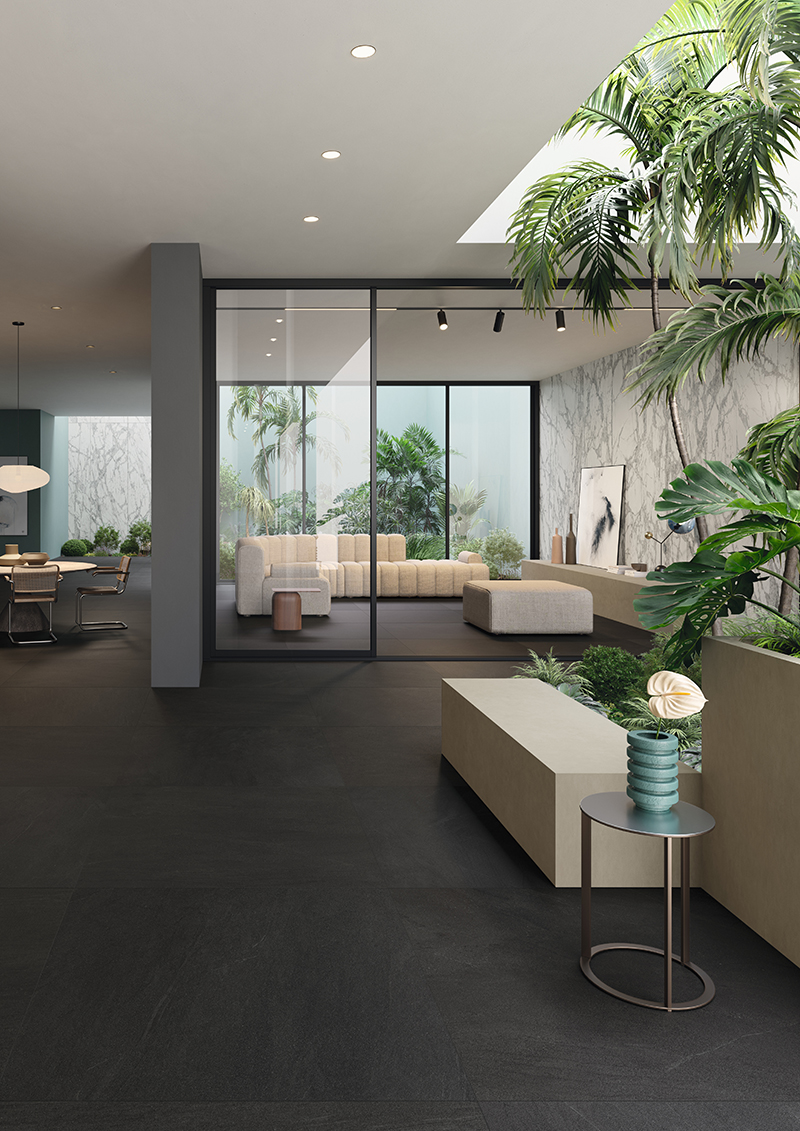Playful Design

Mixing, combining, daring. In interior design, the artful blending of materials is one of the many ways to express and showcase the personality of those who design or inhabit a space. These cross-contaminations transcend the materials themselves and, in their ability to play with and exalt every detail, bring to life a modern and sophisticated vision of the environment, whether it be part of a residential or public project.
This trend of “mixing & matching” originated in the past, when rooms had different flooring depending on their function. For example, wood was not used in the kitchen or bathroom for fear of stains, making ceramic the preferred material. Meanwhile, in the living room and bedroom, the use of hard wood or marble made the environments themselves feel important, while adding a touch of warmth and elegance.
Today, the paradigms that guide interior design have changed significantly. The combination of wood and marble has become hugely popular in recent years, exalting the timeless beauty and elegance of marble surfaces alongside the warmth of natural wood. Marble, with its enduring allure and grand appearance, is often used for flooring and cladding intended to convey a sense of luxury and elegance, while wood, more than any other material, makes a home feel welcoming thanks to the myriad tones and finishes that can be adapted to any style. Thus, these two materials complement one another, at times finding harmony in matching hues and at others playing with contrasts.
The combination of marble and other stones is also visually striking, adding a touch of originality while at the same time conveying a classic elegance. Nevertheless, to create a sense of warmth, the pairing of wood and stone remains the go-to solution. Colour is the final element that gives creative projects a distinct personality. If used thoughtfully, it can help make interiors more vibrant and stimulating, while also subdividing spaces and highlighting architectural features, making a bold statement by framing entrances, accentuating ceilings, and directing focus for a high impact look.
Porcelain stoneware offers designers and architects a multitude of possibilities, thanks to the extreme realism that these surfaces convey and the incredibly innovative technologies which make a wide variety of applications possible: cladding for floors, vertical surfaces, and furniture. Thanks to its profound expertise, Lea Ceramiche, a design-oriented and extremely contemporary brand of Panariagroup, continuously raises the standards for infinite creative possibilities.
Bio Attitude
Bio Attitude captures the true essence of oak and beauty of nature, in the various shades that wood can develop over time and in different climatic conditions. Thus, wood-look is introduced in the bathroom, adding a touch of warmth that contrasts with the marble-look surfaces.


Noblesse
Delight is luxury and seduction: the representation of four sophisticated marbles, selected from among the finest in the world, in a complete ceramic project that offers original tactile sensations, large formats, and exquisite decorations. Furthermore, the 6mm-thick, ultra-thin Slimtech slabs are not only flexible, lightweight, easy to handle, and durable, but are also a universal and extremely sustainable solution. The HINk ZERO project has made it possible for Lea Ceramiche and Panariagroup to fully offset the product’s residual CO2 emissions, calculated over the entire product lifecycle, thus making the slabs entirely carbon neutral.
Nextone
With Nextone, Lea Ceramiche offers a specially engineered stone-look porcelain stoneware product. This collection combines stones from four different quarries to create one that’s entirely new, found nowhere in nature, with a natural and balanced aesthetic. Here too we find the 6mm-thick, ultra-thin Slimtech slabs, perfect for cladding floors, walls, and furniture to create contrast with other textures and materials. Nextone offers surfaces that, thanks to their reduced thickness, require fewer raw materials to produce and are part of the THINk ZERO project, which has made it possible for Lea Ceramiche and Panariagroup to fully offset the product’s residual CO2 emissions, calculated over the entire product lifecycle, thus making the slabs entirely carbon neutral.

